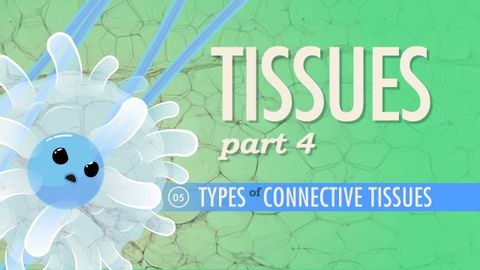
Subtitles & vocabulary
Tissues, Part 4 - Types of Connective Tissues: Crash Course A&P #5
00
bsofade posted on 2015/05/27Save
Video vocabulary
ground
US /ɡraʊnd/
・
UK /graʊnd/
- Transitive Verb
- To break (coffee, etc.) into tiny bits with machine
- To make sharp or smooth through friction
- Intransitive Verb
- To make loud jarring noise by pressing hard
- To hit the bottom
A1
More protein
US /ˈprəʊˌtiːn/
・
UK /ˈprəʊti:n/
- Noun (Countable/Uncountable)
- Group of molecules made from amino acids
B1
More substance
US /ˈsʌbstəns/
・
UK /'sʌbstəns/
- Uncountable Noun
- Essence of; most basic or central qualities
- Particular type of material
A2
More tissue
US /ˈtɪʃu/
・
UK /ˈtɪʃu:/
- Noun (Countable/Uncountable)
- Substance formed by cells of living thing; flesh
- Kind of thin, light paper used to pack objects
A2
More Use Energy
Unlock All Vocabulary
Unlock pronunciation, explanations, and filters
